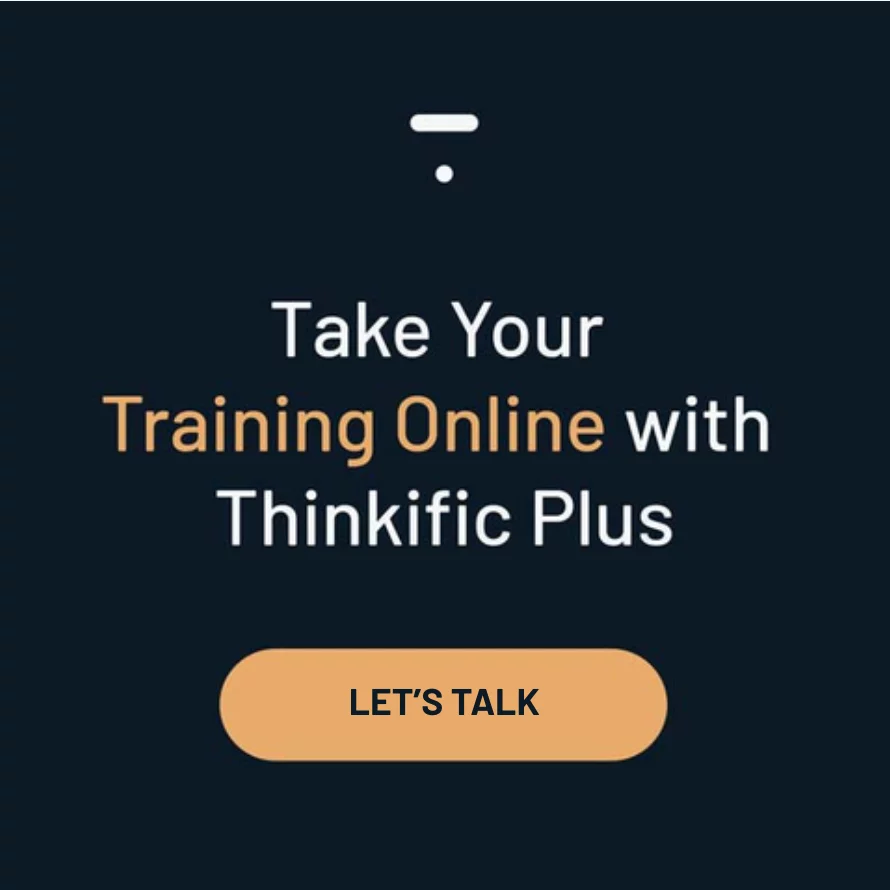So you’ve thought of the perfect way to train employees or customers on a new concept or skill, and now you need to create a winning training proposal to convince key stakeholders that your training solution is the best choice for their needs.
They won’t have the same level of understanding about the topic as you do. So, it’s crucial to communicate your ideas effectively while making a sound business case.
This article will guide you through writing a training proposal using our specially designed template and expert tips that you can tweak to fit any situation.
Skip ahead:
- Introduction to Training Proposal Templates
- Components of the Training Proposal Template
- Tips for Writing a Successful Training Proposal
- Adapting the Training Proposal Template for Different Contexts
- Leveraging Digital Tools for Training Proposal Creation
- Conclusion
- Frequently Asked Questions
Introduction to Training Proposal Templates
Every manager knows that a proposal needs to be persuasive and professional to gain buy-in from decision-makers.
Crafting a high-quality training proposal from scratch can be time-consuming and challenging. That’s where a well-designed training workshop proposal template comes into play.
It can help in several ways.
- Enhances readability: A consistent, logical format makes the proposal easier to read and digest.
- Streamlines the writing process: A template helps you organize your thoughts and ensures you cover all essential elements.
- Saves time: Instead of starting from scratch, you can focus on customizing the template to fit your unique training needs.
- Creates professional results: A polished proposal exudes professionalism and increases the likelihood of winning buy-in.
- Ensures alignment with organizational goals: By following a standard template, you can align your training proposal with the broader objectives of the organization.
For instance, consider a proposal for a new onboarding program. The executive summary should provide a concise overview of the training program’s objectives, the target audience, how it will be delivered, and why it is the best choice.
Remember, using a well-crafted template as a starting point will make the writing process more efficient while ensuring your proposal meets organizational objectives and remains accessible to decision-makers. Your final proposal, however, should be customized to best serve your organization’s and target audience’s particular needs.
Components of the Training Proposal Template
Here’s an overview of the essential components of a training proposal template designed to effectively communicate your solution to decision-makers.
Executive Summary
The executive summary provides a high-level overview of your proposal, outlining the key points and the rationale behind the proposed training program. This section should be concise, compelling, and entice the reader to continue exploring the remaining sections.
Example
“Acme Corp. recognizes the importance of a highly effective onboarding process for new employees. Our proposed training program is designed to enhance efficiency, reduce turnover, and improve overall job satisfaction among our new hires.
This comprehensive program offers a customized blend of instructor-led sessions, e-learning modules, and follow-up support, catering to the diverse learning styles of our workforce. By implementing this onboarding program, Acme Corp. will ensure new employees gain the skills and knowledge needed to thrive, positively impacting our bottom line.”
Background and Needs Assessment
Explain the context of the training program by discussing any relevant factors, such as industry trends, organizational changes, or performance indicators. Use this section to present the problem you intend to solve or the opportunity you aim to seize through implementing the training program.
Example
“Recent increases in project complexity and frequent updates in development tools have led to inefficiencies in our software development team’s workflow, costing valuable time.
We assessed our team’s current skills and tools, identifying gaps in knowledge and areas that would benefit from targeted training. This proposal addresses these needs by recommending a tailor-made training program to enhance individual and team performance.”
Training Program Objectives
Clearly articulate the main objectives of the training program, focusing on the expected outcomes for both the participants and the organization. This should include any specific skills, knowledge, or behavioral changes the training aims to achieve.
Example
“The primary objectives of the time management training program are to:
- Equip employees with the skills to effectively prioritize tasks and set tangible goals.
- Improve overall project planning and workflow management.
- Foster a culture of accountability, ownership, and collaboration.”
Training Program Design and Content
Provide a detailed outline of the learning modules, topics, and activities covered in the training program. Explore the learning methods and instructional design principles used, highlighting the unique aspects of your training approach.
Example
“Our proposed leadership development program is a 12-week course encompassing theoretical and practical approaches.
It includes interactive workshops for core leadership skills, one-on-one coaching sessions with experienced mentors, and opportunities for participants to apply learned skills in real-world situations.
Key topics covered include strategic thinking, effective communication, and change management.”
Training Schedule and Logistics
Include details about the proposed timeline, duration, and location(s) of the training program. This should also encompass any prerequisites, class size limitations, and the required technology, materials, and facilities.
Example
“The sales training program will be delivered in two parts: an instructor-led training session followed by web-based learning modules.
The initial instructor-led session will be hosted at our main office over two days, each lasting four hours. Following this, participants will complete a series of web-based modules over six weeks, reinforcing learned skills and providing opportunities for continued practice.”
Project Budget and Resources
Present a comprehensive breakdown of the estimated budget for the project, including costs for materials, trainers, technology, and other associated expenses. Detail any resource requirements and potential risks or dependencies that need to be addressed.
Example
“The projected budget for the compliance training program includes the following components:
- Instructor fees: $5,000
- Development of e-learning modules: $10,000
- Printed and digital materials: $2,000
- Facilities and catering: $3,000
Total estimated budget: $20,000”
Evaluation and Metrics
Explain the assessment and measurement methods that will be used to determine the effectiveness and impact of the training program. This may include pre- and post-training evaluations, ongoing feedback, and long-term performance metrics.
Example
“Our diversity training program evaluation methods will include qualitative and quantitative measures. Pre- and post-training surveys will gauge participants’ understanding and attitudes toward diversity and inclusion.
Long-term success will be measured by monitoring changes in employee engagement, collaboration, retention rates, and feedback from annual company-wide surveys.”
Conclusion and Call to Action
In this final section, summarize the key points of your proposal and make a persuasive case for its implementation. Encourage decision-makers to take action by providing clear next steps, including any approvals needed or deadlines to be adhered to for successful project execution.
Example
“In conclusion, our proposed soft skills training program aims to bridge the identified gaps in communication, teamwork, and emotional intelligence among our employees.
Investing in this training will enhance employee productivity, collaboration, and job satisfaction, ultimately improving our organization’s ability to deliver exceptional results.
Please review this proposal and provide your approval by [date], so we may begin implementation and secure our team’s continual growth and success.”
Tips for Writing a Successful Training Proposal
Crafting an effective training proposal requires careful consideration and attention to detail. Check out our six customizable templates that can help streamline the process and have a proposal ready to send in minutes.
If you want to create your own instead, follow these expert tips to guide you in writing a training proposal that communicates the value and benefits of your program.
- Conduct thorough research: Gather as much information as possible about the training’s target audience and the organization’s needs. Identify the knowledge gaps or areas of improvement, objectives, and desired outcomes.
- Focus on benefits and ROI: Highlight the potential positive outcomes and the expected return on investment (ROI) from the training program. Be specific, as decision-makers will be more interested in the tangible benefits of the proposal.
- Use clear, concise language: Write your proposal using clear, simple language that is easy for any reader to understand. Avoid jargon and complicated terms, which may obscure the message and confuse stakeholders.
- Tailor the proposal for decision-makers: Adapt your proposal to the specific priorities of the decision-makers who will review it. If appropriate, provide examples of past successful training programs, case studies, or testimonials to strengthen your pitch.
- Proofread and revise for clarity and impact: Thoroughly proofread and revise it to ensure it is free from errors, inconsistencies, or confusing language. Enlist a trusted colleague or friend to review your proposal and provide objective feedback on its clarity, persuasiveness, and overall impact.
By following these tips, you’ll be well on your way to creating a compelling proposal that effectively conveys the value and impact of your proposed training program, ultimately increasing the likelihood of securing approval from key decision-makers.
Adapting the Training Proposal Template for Different Contexts
There is no one-size-fits-all approach to training, as each audience may have different learning preferences and requirements. You may need a variety of methods.
- Instructor-led training (ILT): Facilitated by a professional trainer or subject matter expert, ILT provides personalized instruction and feedback.
- E-learning: Online courses and modules offer flexibility and convenience for learners, often allowing them to progress at their own pace.
- Blended learning: Combining elements of both ILT and e-learning, blended learning offers a comprehensive approach that caters to various learning styles.
- Workshop-based training: Interactive, hands-on workshops enable participants to practice new skills and collaborate with peers in a group setting.
- On-the-job training: Real-world experiences and guidance from experienced colleagues can be invaluable for skill development and practical knowledge.
As you develop your training proposal, consider incorporating a mix of training types to keep things fresh.
The organization can also have diverse priorities and training needs, which may require a tailored approach in your proposal. Here are a few ways to adapt the training proposal for different contexts.
- Target specific skills: Identify the precise skills or competencies to be addressed by the training, and design the program accordingly. For instance, if the focus is on improving communication skills, create a training program that concentrates on active listening, conflict resolution, and non-verbal communication.
- Consider industry-specific requirements: Be mindful of regulations, standards, or industry best practices unique to the organization’s field. Adapt the training proposal template to meet these requirements and demonstrate your awareness of industry-specific context.
- Align with organizational culture: Tailor the training proposal to reflect the organization’s values, attitudes, and work environment. Incorporate language, examples, and scenarios that resonate with the company’s culture and goals.
- Address all levels of expertise: Depending on the target audience, consider whether the training’s content should accommodate varying levels of experience or proficiency. Create a modular structure that allows learners to engage with content based on their background and needs.
- Include post-training support: Sometimes, training cannot be considered a one-time event—additional support is needed for the newly acquired skills to fully integrate into the organization. Mention follow-up or refresher sessions, mentorship programs, or access to further resources as part of your proposal.
By thoughtfully considering different training methods and organizational needs, you can design a versatile and effective training proposal template that can be adapted for various situations, ultimately increasing the likelihood of approval and successful implementation.
Leveraging Digital Tools for Training Proposal Creation
Using digital tools can greatly enhance the process of creating high-quality, professional training proposals. Integrating these tools into your workflow can save time, improve collaboration, and result in a more polished, engaging final product.
Here are some types of digital tools commonly used in proposal creation.
- Google Docs: A cloud-based word processor that allows real-time collaboration and editing, enabling teams to work simultaneously on a proposal and keep track of changes.
- Canva: An easy-to-use graphic design platform that enables the creation of visuals, charts, and graphics that support and enhance the content of your training proposal.
- Asana: A project management tool that allows you to assign and track tasks related to proposal creation while storing and sharing files and resources.
- Thinkific: An online course platform that allows you to create, market, and sell your training programs. You can leverage Thinkific’s platform to showcase your training proposal and deliver it as an accessible online course.
By leveraging these digital tools during the training proposal creation process, you can optimize your workflow, enhance collaboration, and improve the overall quality of your proposals, ultimately increasing the likelihood of winning approval for your training programs.
Conclusion
A well-crafted training proposal is essential to secure buy-in from decision-makers and ensure the success of your training programs.
Don’t miss out on the benefits that a carefully designed proposal can offer. Start by using our training proposal template to create a compelling pitch that addresses your organization’s unique needs and enhances the chances of winning the approval you need.
With the right preparation, strategy, and tools, you can create proposals that drive positive change and lasting impacts on your organization’s performance and success.
Download the Training Proposal Template
Win more training contracts with ease. This free template provides a professional structure for presenting your training programs or courses to potential clients. Save time, heighten persuasion, and increase your acceptance rates. Secure your copy today and elevate your proposal game.
Frequently Asked Questions
Q. What is the purpose of a training proposal?
A training proposal aims to present a structured plan for a training program addressing specific organizational needs. It seeks to secure buy-in from stakeholders, resources, and approvals for successful implementation.
Q. Who should be involved in the process of creating a training proposal?
The process involves collaboration between trainers, subject matter experts, instructional designers, project managers, and relevant stakeholders. This ensures a comprehensive proposal that meets the target audience’s unique needs and aligns with organizational objectives.
Q. How can I ensure that my training proposal is well-received by decision-makers?
To achieve decision-maker buy-in:
- Articulate objectives, benefits, and ROI
- Research organizational needs and tailor the proposal
- Use clear, concise language
- Leverage data, case studies, or testimonials
- Collaborate with key stakeholders throughout the process
Q. What are the most common mistakes to avoid when writing a training proposal?
Some of the most common mistakes are insufficient research, overemphasis on methodology, unclear or confusing language, or incomplete and poorly structured proposals.
Q. How can I present a compelling case for the return on investment of a training proposal?
Present a compelling case by demonstrating tangible and intangible benefits, such as improved employee performance, enhanced satisfaction or engagement, achievement of organizational objectives, and improved customer satisfaction. Support your claims with examples or data.







